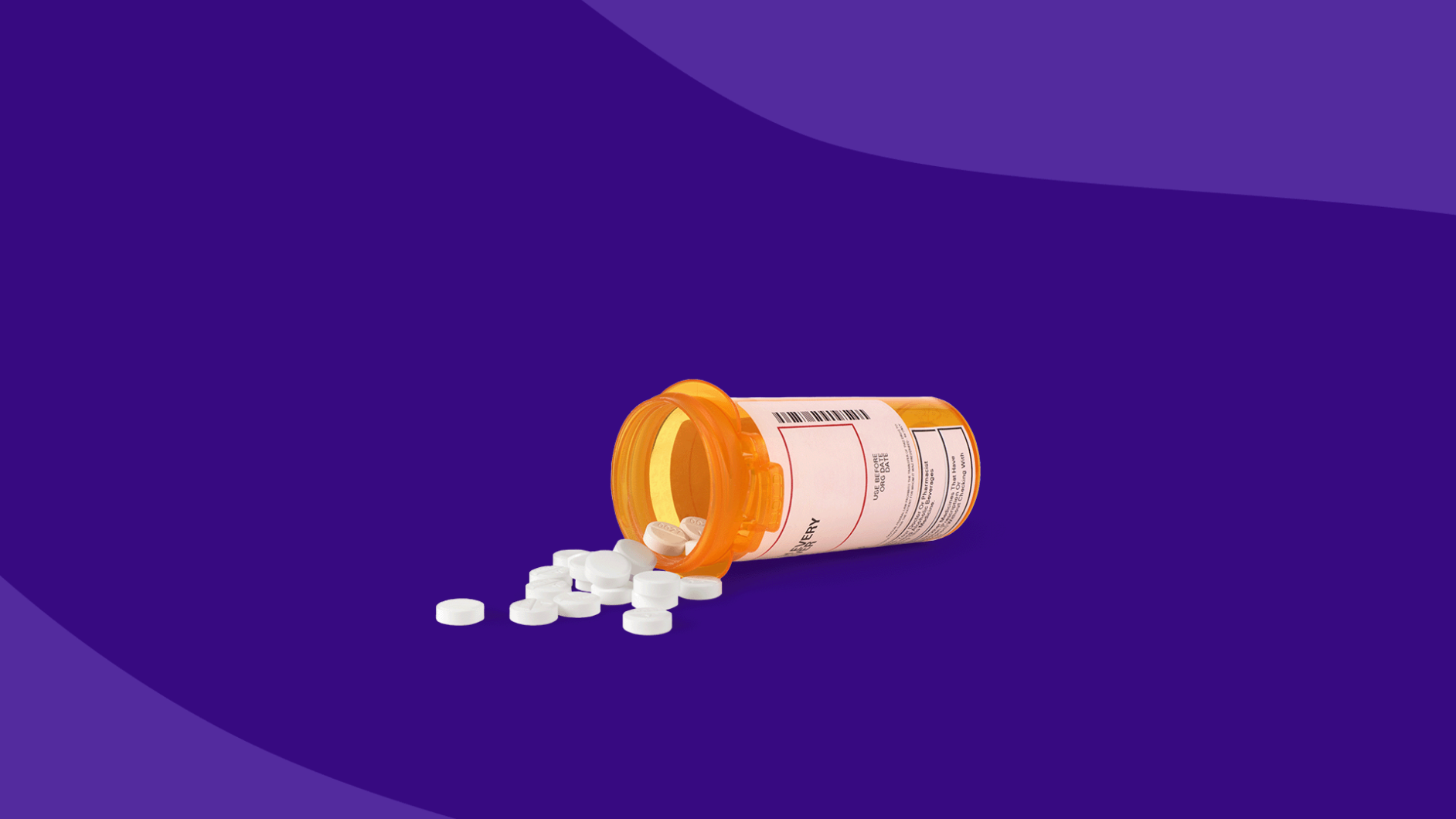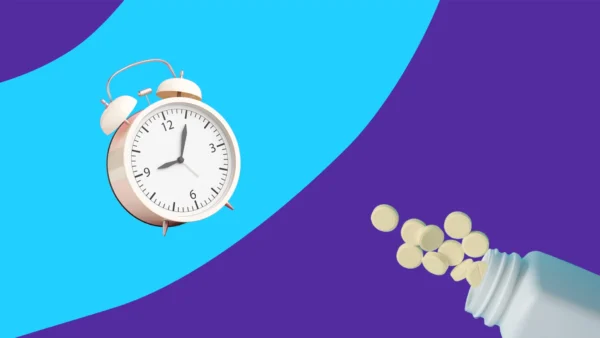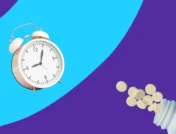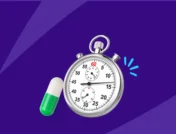Common glimepiride side effects | Serious side effects | Weight gain | Treatment failure | Side effects timeline | Contraindications | Warnings | Interactions | How to avoid side effects | How to treat side effects
Glimepiride is a generic prescription drug known by its brand name Amaryl. It is an oral diabetes medication that controls high blood sugar in people with Type 2 diabetes when combined with a proper diet and exercise plan. Glimepiride is not used to treat patients with Type 1 diabetes or diabetic ketoacidosis. It belongs to a group of drugs called sulfonylureas. This drug class works by forcing insulin secretion from pancreas cells. Side effects are a concern, particularly low blood sugar (hypoglycemia).
Common side effects of glimepiride
The most common side effect of glimepiride is low blood sugar, though the incidence has not been determined precisely. The risk of hypoglycemia is dose-related and is higher in people taking glimepiride with metformin or insulin.
The most common side effects of glimepiride are:
- Low blood sugar
- Weakness
- Headache
- Dizziness
Serious side effects of glimepiride
The most serious side effects of glimepiride are:
- Secondary failure (return to high blood sugar)
- Extremely low blood sugar levels
- Liver dysfunction
- Blood disorders
- Low blood sodium
- Porphyria
- Severe drug or allergic reactions
Glimepiride and weight gain
Weight gain is a common side effect of sulfonylureas, but it is not a common side effect of glimepiride. Studies have shown that glimepiride either has a small dose-related effect on weight gain or no effect at all. To put that into perspective, 1 out of 10 people taking another sulfonylurea, glyburide, can expect to gain weight during treatment. As a general rule, however, if anyone with Type 2 diabetes experiences weight gain, no matter what the treatment, talk to the prescriber or a nutritionist.
Glimepiride and treatment failure
When taken over the long-term, sulfonylureas often result in treatment failure (secondary failure). High blood sugar levels return, and many patients on sulfonylureas have to begin insulin treatment. Sulfonylureas force beta cells in the pancreas to secrete insulin. Over time, this slowly kills off the beta cells or wears them out—healthcare professionals are unsure which. No matter what the cause, the body’s natural production of insulin drops, and the drugs stop working.
Before starting glimepiride or any other sulfonylurea, people should talk to their prescriber about their treatment options. Some drugs use a different mechanism to stimulate insulin production or keep insulin from being broken down in the body. These drugs are not strongly associated with secondary failure.
How soon do glimepiride side effects start?
Many common side effects—low blood sugar, headache, dizziness, weakness, and nausea—tend to happen early in treatment. An allergic reaction could happen right after the first dose. Most serious side effects, however, are delayed and require weeks, months, or even years of treatment to occur.
How long do glimepiride side effects last?
As with many prescription drugs, glimepiride’s most common side effects may improve over time as the body adjusts to the drug. If they don’t, then they’ll usually improve when the drug is stopped. Some serious side effects may last longer.
What are the long-term side effects of glimepiride?
Treatment failure, also called secondary failure, is a condition in which blood sugar rises despite drug treatment. It is a long-term side effect of sulfonylureas like glimepiride. It usually takes years of treatment before the body stops producing enough insulin, but it could happen in as little as six months.
Glimepiride contraindications
People with certain pre-existing medical conditions have an unacceptably high risk of serious medical issues when taking glimepiride. These include:
- People with high levels of ketones in the blood (diabetic ketoacidosis)
- People allergic to glimepiride
- People allergic to sulfa drugs (sulfonamides)
Glimepiride is contraindicated in all of these cases. Additionally, glimepiride is never used to treat type 1 diabetes.
Pregnancy
Glimepiride can be used during pregnancy. No risks to the baby or the mother have been identified. However, because there’s a risk that a baby will be born with low blood sugar, healthcare professionals are advised to discontinue glimepiride two weeks before the expected delivery date.
Breastfeeding
Women who are breastfeeding an infant should use glimepiride with caution. Healthcare professionals don’t know if glimepiride is present in human breast milk or if it causes problems in nursing infants. If it’s used while breastfeeding, watch for signs of low blood sugar in the baby.
Children
The FDA has not approved the use of glimepiride in children or teens younger than 18 years of age. However, some healthcare providers may use it off-label in children with Type 2 diabetes, but the FDA does not recommend it because of the risk of low blood sugar and weight gain.
Seniors
In clinical trials, glimepiride treatment showed no difference in effectiveness or side effects in seniors versus younger adults. However, healthcare providers are usually cautious about using sulfonylureas in elderly patients because of the increased risk of hypoglycemia. Low sodium is another cause for concern.
Glimepiride warnings
All diabetic medications have a few warnings of which people should be aware. These usually involve possible side effects due to pre-existing conditions, but taking too many pills is another serious consideration.
Cautions
Because of glimepiride’s therapeutic and adverse effects, some pre-existing conditions may get worse if glimepiride is taken. Most importantly, some people are more vulnerable to low blood sugar caused by glucose-lowering drugs. They may need to regularly check their blood sugar. Caution should be used with:
- Seniors
- Debilitated patients
- Malnourished patients
- Kidney impairment
- Liver dysfunction
- Thyroid disease
- Adrenal gland dysfunction
- Pituitary gland dysfunction
Some people may not have symptoms of low blood sugar because the nerves that control automatic responses in the body—like blood pressure, body temperature, and digestion—are damaged, a condition called autonomic neuropathy. For these people, prolonged low blood sugar is a risk, so they may need to regularly monitor their blood sugar.
About one in 12 people have a common hereditary condition called glucose-6-phosphate dehydrogenase (G6PD) deficiency. G6PD is an enzyme that is needed by red blood cells. Without this enzyme, red blood cells are vulnerable to damage caused by certain medicines or foods. Glimepiride is one of those medicines that kills red blood cells. When red blood cells die off too quickly, it results in a serious medical condition called hemolytic anemia.
Abuse and dependence
Glimepiride does not cause physical dependence and it is not associated with drug abuse.
Overdose
Because of the risk of severe hypoglycemia, go to an emergency room if too much glimepiride is taken. Treatment will usually consist of intravenous glucose. Although the maximum dose is 8 mg per day, the actual dose is based on each person’s unique response to the drug. Anything more than that is too much.
Glimepiride interactions
Because glimepiride is used to control blood sugar, the most important drug interactions involve those that either raise or lower blood sugar. These drugs aren’t prohibited, but glimepiride doses will have to go up or down to compensate. However, these drug interactions are nothing to worry too much about as long as blood sugar is within an appropriate range. Adjusting doses over time is a normal part of taking diabetes drugs.
Drugs that lower blood sugar will require lower doses of glimepiride to compensate. These drugs include:
- Diabetes medications, particularly other sulfonylurea drugs
- SSRIs
- Tetracycline antibiotics
- Macrolide antibiotics
- Fluoroquinolone antibiotics
- Sulfa drugs
- ACE inhibitors
- Fibrates (cholesterol drugs)
- Coumarin blood thinners, such as warfarin
- Ulcer treatments called H2 receptor blockers
- Salicylates, such as aspirin
- NSAIDs
- Alcohol
Drugs that increase blood glucose will require that glimepiride doses increase as well. These drugs include:
- Birth control pills
- Estrogen
- Corticosteroids
- Thiazide diuretics
- Thyroid hormones
- Antipsychotic medications called atypical antipsychotics
- Antipsychotic medications called phenothiazines
- HIV/AIDS drugs called protease inhibitors
- Sympathomimetics, such as albuterol and epinephrine
- Laxatives
Beta blockers can also cause problems with blood glucose levels.
Bile acid sequestrants, such as colesevelam, reduce the amount of glimepiride absorbed by the body, so doses may need to be raised. Glimepiride tablets should be taken at least four hours before a dose of colesevelam.
How to avoid glimepiride side effects
Many of the side effects of glimepiride can be minimized through a few basic strategies.
1. Tell the prescribing healthcare provider about all medical conditions
The first place to start is before the prescription is even written. Make sure to tell the prescriber if you have any of the following medical conditions:
- Heart disease
- Liver disease
- Kidney disease
- Thyroid, adrenal gland, or pituitary problems
- A hereditary condition called G6PD deficiency
- Pregnancy or plans to become pregnant
- Breastfeeding or plans to breastfeed
2. Share a complete list of drugs being taken with the prescriber
Drug interactions are another potential source of side effects. The biggest problem involves prescription drugs, over-the-counter medications, or dietary supplements that raise or lower blood sugar. There are quite a few of these, so tell the prescriber about every drug and supplement being taken.
3. Take the tablets as directed
Another good way to avoid side effects is to follow the instructions given by the prescriber or written in the drug information insert. Take the dose of glimepiride at the right time each day. Only take one tablet per day. Take it with breakfast or the first main meal of the day. Don’t take it on an empty stomach. If a dose is missed, it can be taken when remembered, as long as it’s closer to the time of the missed dose than the time of the next dose. However, if it’s closer to the time of the next dose, skip the missed dose. Don’t take a double dose to make up for a missed dose.
4. Regularly check blood sugar levels
Low blood glucose is a common problem with sulfonylurea drugs like glimepiride. The best way to avoid low blood sugar is to regularly check it. If blood sugar levels get too low, do what the prescriber has instructed. They may prescribe you glucose tablets or a glucagon intramuscular pen to use. They may also instruct you to consume something that is high in sugar, such as a chocolate bar or sugary juice.
5. Don’t skip meals
Another way to avoid low blood sugar is to not skip or delay meals. Glimepiride increases insulin in the body throughout the day, so regular meals are required to keep blood sugar normal.
6. Avoid alcohol
Alcohol not only increases the risk of low blood sugar, but it also prolongs its duration. Drinking should be avoided when taking drugs like glimepiride. If drinking can’t be avoided, drink moderately and check blood sugar levels after drinking.
How to treat side effects of glimepiride
When side effects happen, all hope isn’t lost. Many side effects have simple solutions, but a few may require medical attention.
Low blood sugar
Low blood sugar can often be handled immediately. The prescriber will explain the symptoms of low blood sugar. The earliest hypoglycemic signs are hunger, sweating, shaking, confusion, and trouble thinking or focusing. When blood glucose gets low during sleep, the signs are drowsiness, fatigue, and confusion upon waking. The prescriber will also give instructions about what to do. You may be asked to carry glucose pills or a source of carbohydrates like candy or sugar cubes. If low blood sugar persists for a long time or keeps coming back, contact the prescriber.
Dizziness
If dizziness strikes, just sit down. Wait until the spinning stops and then stand up slowly. If dizziness keeps happening, contact the prescribing healthcare provider.
Headaches
If headaches are a problem, get medical advice from the prescriber about what over-the-counter pain relievers are best to take. Acetaminophen may be okay to take, but both aspirin and ibuprofen could raise blood sugar a bit. In place of drugs, drinking fluids and resting could help. If headaches are severe or prolonged, contact the prescribing healthcare professional.
Liver problems
Tell the prescriber if any of the signs of liver dysfunction are noticed, including:
- Skin or eyes turning yellow
- Dark-colored urine
- Upper abdominal pain
Allergic reactions
An allergic reaction or drug reaction is a serious and possibly life-threatening side effect. Stop taking the medicine and get medical help if any of the following symptoms are noticed:
- Swelling of the face, mouth, lips, or throat
- Hives
- Trouble breathing
- Purple skin
- Skin blisters
- Skin pain
- Sores around the eyes or genitals
- Fever
- Sore throat
Sources
- Glimepiride, Epocrates
- Glimepiride, StatPearls
- Glimepiride drug summary, Prescriber’s Digital Reference
- Glimepiride tablet prescribing information, U.S. National Library of Medicine
- Glyburide drug summary, Prescriber’s Digital Reference
- Reducing the burden of diabetes treatment: A review of low-cost oral hypoglycemic medications, Current Diabetes Reviews
- Why treatment fails in Type 2 diabetes, PLOS Medicine











